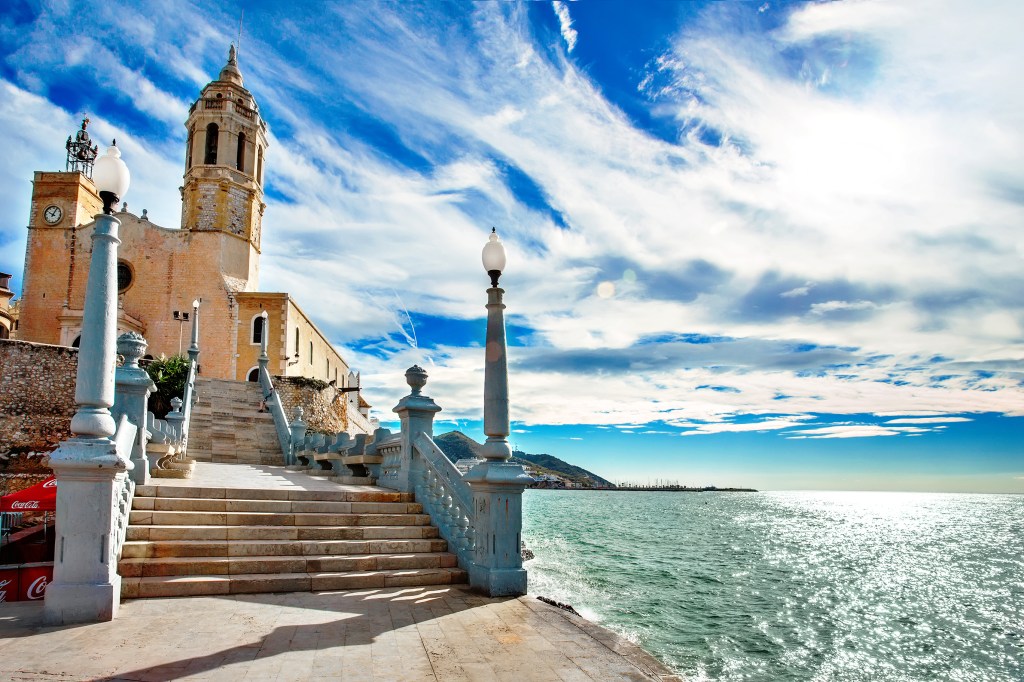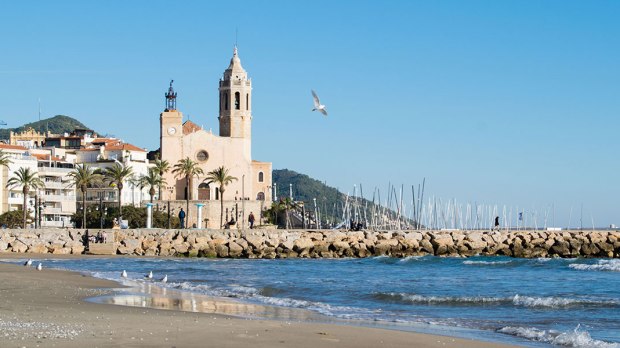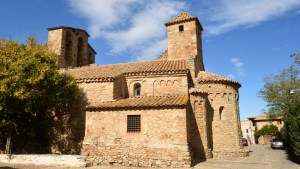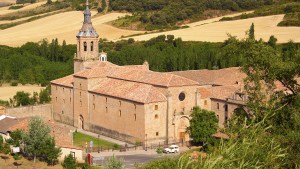Lenten Campaign 2025
This content is free of charge, as are all our articles.
Support us with a donation that is tax-deductible and enable us to continue to reach millions of readers.
The church of San Bartholomew and St. Thecla (better known as St.Thecla’s Church) is the parish church of the town of Sitges, a noted (and rather ancient) beach town on the outskirts of Barcelona, Spain. Whereas the town goes all the way back to Late Antiquity (the original Iberian settlement was taken by the Romans in the 1st century BC), the church was only built in the 17th century. Since then, it has gone through numerous subsequent modifications. Its asymmetrical silhouette, on a small cliff overlooking the Balearic sea, is one of the most characteristic images of the town.
The church, built in typically Baroque fashion with three naves and a semicircular vault, is in the same place that had already housed two previous churches, one Romanesque and the other Gothic. Sadly, most information regarding these two churches was lost long before this new church was built.
The construction of the current church began in 1665 and finished in 1672. One of the two bell towers was built two years later, but the bells and the clock were not placed until 1868, once the old town clock was demolished. In the 19th century, the Chapel of the Sacrament was built, and the second bell tower was renovated.

There are several altarpieces within the church, all of them works of different artists, both local and Neapolitan. Whereas most of them are Baroque, some of these pieces can be traced back to the late Renaissance. But, perhaps more striking (and as proof that some older churches once stood there), two Gothic tombs from 1317 and 1322 are found under the choir.
Who was St. Thecla?
The Acts of Paul and Thecla is a 2nd-century text that forms part of the Acts of Paul (one of the most widely known Apocryphal Acts), but was also circulated separately. According to the text, Thecla was a young noble virgin from Iconium who converted to Christianity and followed Paul.
In the text, it is said that Thecla spent three days sitting by her window, listening to Paul. Thecla’s family became concerned that Thecla was going to follow Paul’s teachings – which she eventually did. They turned to local authorities to punish Paul for “making virgins averse to marriage.” Paul was sent to prison, where Thecla visited him. Since she refused to leave him and return to her mother and fiancé, Paul was forced to leave the city and Thecla was sentenced to death.
The text claims that Thecla was miraculously saved from burning at the stake. She then encountered Paul outside of Iconium, and then traveled with him to Antioch of Pisidia. There, a nobleman attempted to rape her. Thecla fought him off, which caused her to be put on trial for assault. She was sentenced to be eaten by wild beasts, but was again saved: Female beasts, particularly lionesses, protected her against her male aggressors. While in the arena, she “baptized herself” by throwing herself into a nearby lake.
Thecla rejoined Paul in Myra, and then traveled on her own, until she arrived in Seleucia. According to some versions of these apocryphal Acts, she lived there in a cave for 72 years.



